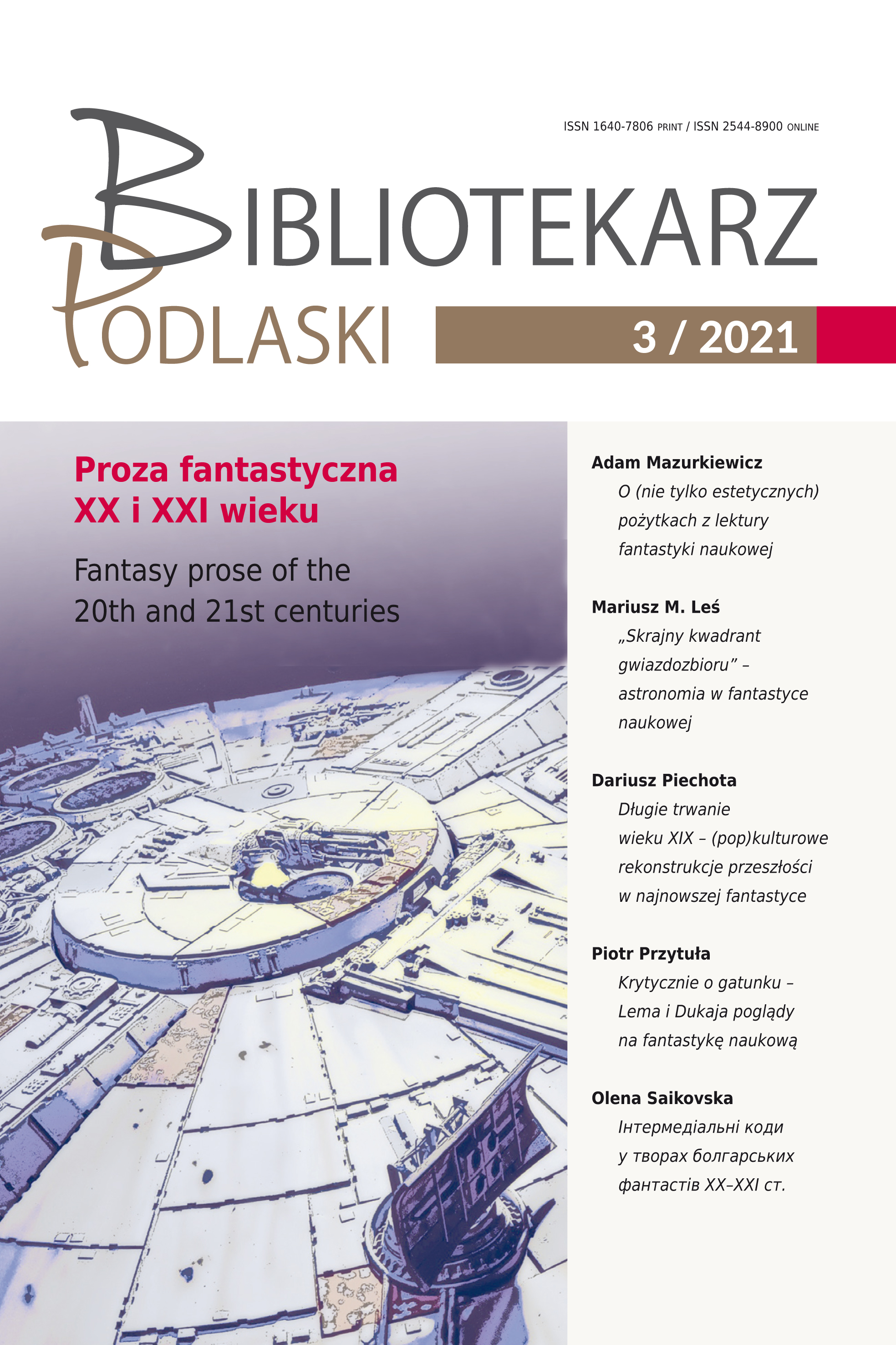Abstract
Classified among the short story-romance stream of Wacław Potocki’s works, Syloret occupies an important place in the poet’s epic legacy. Throughout the extensive digressive parts of this work, Lusatia-based writer spins erudite reflections on the nature of the world, the human condition, the essence of human fate, and explicates the thoughts of ancient philosophers (e.g. Seneca). Potocki turns to philosophical theories – above all to Christianised stoicism (neostoicism), which becomes the proper subject of his literary discourse. In the article the author undertakes research on the most important concepts of Stoic ethics (fortune, nature, virtue), to which the poet refers in his romance poem. An attempt is also made to answer the question of the
seventeenth-century author’s use of an extensive characterisation of the principles of this philosophy.
References
Potocki W., Syloret albo prawdziwy abrys po ciężkim straconych synów żalu im niespodziewańszego, tym większego smutnego ojca wesele. Starodawna z różnych greckich i łacińskich pisarzów wyjęta i polskim stylem nowo podana historia, Bblioteka Jagiellońska sygn. 132.
Bieńkowski T., Antyk w literaturze i kulturze staropolskiej (1450–1750). Główne problemy i kierunki recepcji, Wrocław 1976.
Bobek W., „Argenida” Wacława Potockiego w stosunku do swego oryginału, Kraków 1929.
Borkowski A., Imaginarium symboliczne Wacława Potockiego „Ogród nie plewiony”, Siedlce 2011.
Goliński J. K., Insza rzecz pobożność, insza nabożność. O poetyckich świadectwach religijności Wacława Potockiego, [w:] Potocki (1621–1696). Materiały z konferencji naukowej w 300-lecie śmierci poety, red. W. Walecki, Kraków 1998.
Goliński J. K., „Via purgativa”. O religijności Wacława Potockiego i jej świadectwach poetyckich, „Pamiętnik Literacki”, 1998, z. 2.
Kotarski E., Metaforyka morska w literaturze staropolskiej, [w:] Studia o metaforze, red. E. Sarnowska-Temeriusz, t. 1, Wrocław 1980.
Kotarska J., „Dignitas humana” w twórczości Wacława Potockiego, [w:] „Theatrum mundi”. Ze studiów nad poezją staropolską, Gdańsk 1998.
Künstler-Langner D., Idea „vanitas” jej tradycje i toposy w poezji polskiego baroku, Toruń 1996.
Lasocińska E., „Cnota sama z mądrością jest naszym żywotem”. Stoickie pojęcie cnoty w poezji polskiej XVII wieku, Warszawa 2003.
Lasocińska E., Problem neostoicyzmu w badaniach nad literaturą XVII wieku w Polsce, [w:] Barok w Polsce i w Europie Środkowo-Wschodniej, red. J. Pelc, K. Mrowcewicz, M. Prejs, Warszawa 2000, s. 241-252.
Lasocińska E., O pojęciu wielkiego umysłu i cnocie wielkomyślności. Stoicyzm i jego związki z etyka Arystotelesa w literaturze polskiej XVII wieku, „Barok” 2002, z. 1-2.
Lasocińska E., „Period XV”– stoicyzm łużeńskiego poety, „Roczniki Humanistyczne” 2001, t. 49, z. 1.
Lasocińska E., Recepcja etyki starożytnej w literaturze renesansu, baroku i wczesnego oświecenia, [w:] Etos humanistyczny, red. P. Urbański, Warszawa 2010.
Rej M., Figliki, Warszawa 1974.
Sokolski J., Bogini – pojęcie – demon. Fortuna w działach autorów staropolskich, Warszawa 1996.
Urbański P., Stoicyzm i neostoicyzm w kulturze polskiej, [w:] „Humanitas”. Projekty antropologii humanistycznej. Część druga: Inspiracje filozoficzne projektów antropologicznych, red. Nauk. A. Nowicka-Jeżowa, Warszawa 2010.
Wątki neostoickie w literaturze polskiego renesansu i baroku, red. P. Urbański, Szczecin 1999.
Articles published in the “gold open access” mode on the basis of a non-exclusive license agreement between the publisher and the author. Permitted use:
- the publication may be read and stored on any device,
- the publication may be cited (with obligatory reference to the author, the title of the text, as well as the full title, bibliographic address of the issue and page of the journal)
The editorial team of “Bibliotekarz Podlaski” implements an open access policy by publishing materials in the form of the so-called Gold Open Access. From volume 42 (issue 1/2019), the journal is available under the Creative Commons license (Attribution – ShareAlike: CC BY-SA).
The key declarations of the Open Access and Open Science movement, which we fully support, are available on the CEON Open Science website.
COPYRIGHT:
The editorial team of “Bibliotekarz Podlaski” implements an open access policy by publishing materials in the form of the so-called Gold Open Access. The journal is available under the Creative Commons license – Attribution – ShareAlike 4.0: International: CC BY-SA 4.0).
The key declarations of the Open Access and Open Science movement, which we fully support, are available on the CEON Open Science website.
“Bibliotekarz Podlaski” allows its readers to read, download, copy, distribute, print, search and link to the full content of articles. We enable full, immediate, unlimited (both in a territorial, temporal and technical sense) open access to all published content, in accordance with the principle that freely available research increases and accelerates the global development of science and the exchange of knowledge.
The editorial team of “Bibliotekarz Podlaski” encourages authors to place articles published in the journal in open repositories (after the review or the final version of the publisher), provided that a link to the journal’s website is provided.
The journal does not charge the authors any fees for accepting and publishing their texts.


